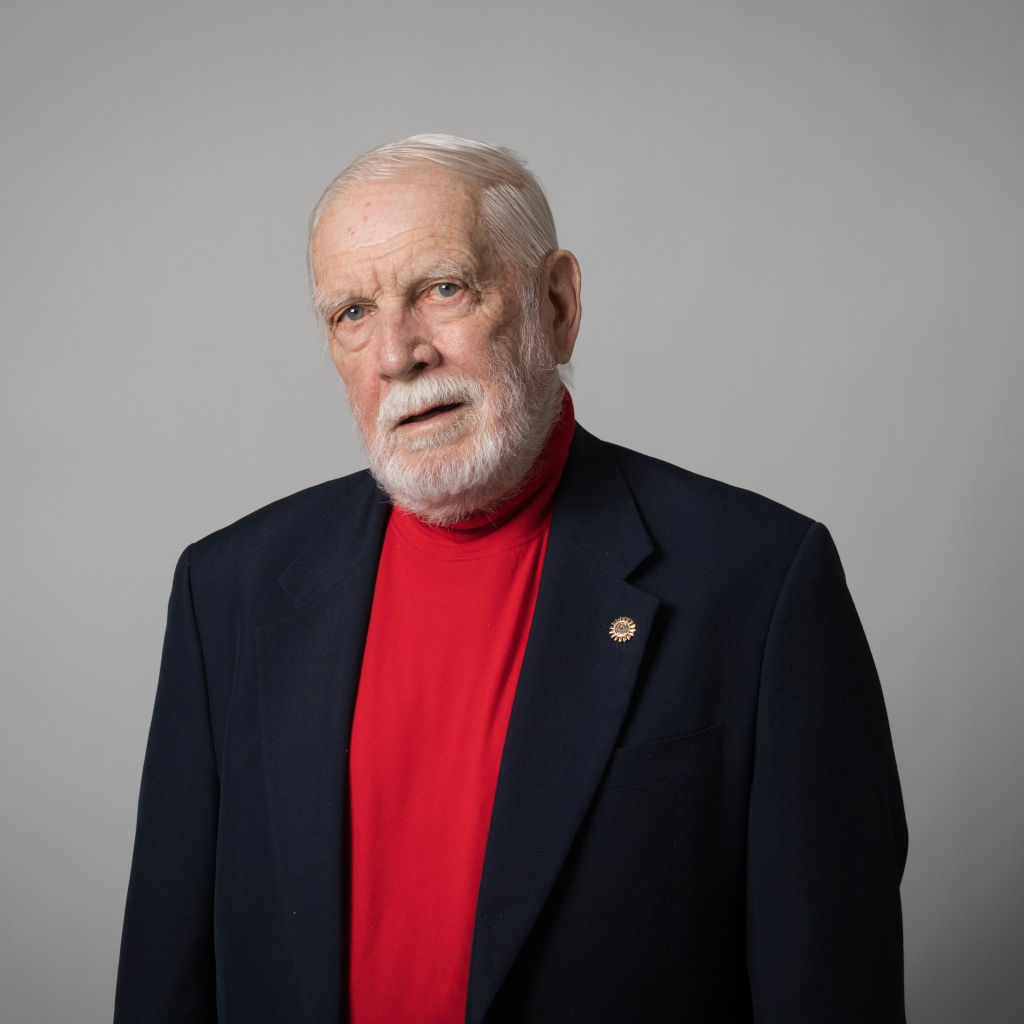
Professor Emeritus, School of Mechanical, Aerospace, and Manufacturing Engineering
| lee.langston@uconn.edu | |
| Phone | (860) 486-4884 |
| Office Location | Engineering II Building 210 |
| Google Scholar Link | |
Brief Bio
Lee Langston received a BSME (1959) from the University of Connecticut, and an MS (1960) and a Ph.D. (1964) from Stanford University. He was with Pratt and Whitney Aircraft as a research engineer working on fuel cells, heat pipes and jet engines from 1964 to 1977.
During these years he also participated in mountain climbing activities in various parts of the world, with a first ascent of Peak T3 in Pakistan. He joined the mechanical engineering faculty at the University of Connecticut in 1977, rising to the rank of Professor in 1983. At UConn he has taught graduate and undergraduate courses in heat transfer and fluid mechanics, with research activities involving the measurement, understanding and prediction of secondary flows in gas turbines. He served as Interim Dean of the School of Engineering in 1997-98 and became Professor Emeritus in 2003.
Lee Langston is a Life Fellow of the American Society of Mechanical Engineering Engineers (ASME), has served as Editor, ASME Journal of Engineering for Gas Turbines and Power (2001-2006) and was a member of the Board of Directors of the ASME International Gas Turbine Institute (IGTI). In 2015 he was the recipient of IGTI’s R. Tom Sawyer Award, for outstanding contributions in the field of gas turbines. For the past twenty years Professor Langston has written a column and a variet
| Three-dimensional flow within a turbine cascade passage
LS Langston, ML Nice, RM Hooper
|
| Crossflows in a turbine cascade passage
LS Langston
|
| Secondary flows in axial turbines—a review
LS Langston
Annals of the New York Academy of Sciences 934 (1), 11-26
|
| Heat pipe turbine vane cooling
L Langston, A Faghri
South Carolina Energy Research and Development Center, Clemson, SC (United …
|
| Horseshoe vortex formation around a cylinder
WA Eckerle, LS Langston
Journal of Turbomachinery 109 (2), 278-285
|
| A new surface-streamline flow-visualization technique
LS Langston, MT Boyle
Journal of Fluid Mechanics 125, 53-57
|
| Leading edge modification effects on turbine cascade endwall loss
S Becz, MS Majewski, LS Langston
Turbo Expo: Power for Land, Sea, and Air 36894, 359-367
|
| An experimental investigation of contoured leading edges for secondary flow loss reduction
S Becz, MS Majewski, LS Langston
Turbo Expo: Power for Land, Sea, and Air 41707, 1407-1415
|
| Introduction to gas turbines for non-engineers
LS Langston, G Opdyke, E Dykewood
Global Gas Turbine News 37 (2), 1-9
|
| Flow in a turbine cascade: Part 1—Losses and leading-edge effects
J Moore, A Ransmayr
|
| Fahrenheit 3,600
LS Langston
mechanical engineering 129 (04), 34-37
|
| Measurement and calculation of turbine cascade endwall pressure and shear stress
BM Holley, S Becz, LS Langston
|
| Hydrogen fueled gas turbines
LS Langston
Mechanical Engineering 141 (03), 52-54
|
| Gas turbine industry overview
LS Langston
International Gas Turbine Institute
|
| Vapor-chamber fin studies
HR Kunz, LS Langston, BH Hilton, SS Wyde, GH Nashick
NASA Report CR-812
|
| Research on cascade secondary and tip-leakage flows-periodicity and surface flow visualization
LS Langston
Proc. Second. Flows Turbomachines
|
| Turbines, gas
LS Langston
encyclopedia of Energy 6, 221-230
|
| Each blade a single crystal
L Langston
Am. Sci 103 (1), 30
|
| Drag reduction of a cylinder/endwall junction using the iceformation method
RS LaFleur, LS Langston
|
| Liquid transport properties of some heat pipe wicking materials
SS LANGSTON, HR Kunz
MECHANICAL ENGINEERING 91 (11), 67-&
|